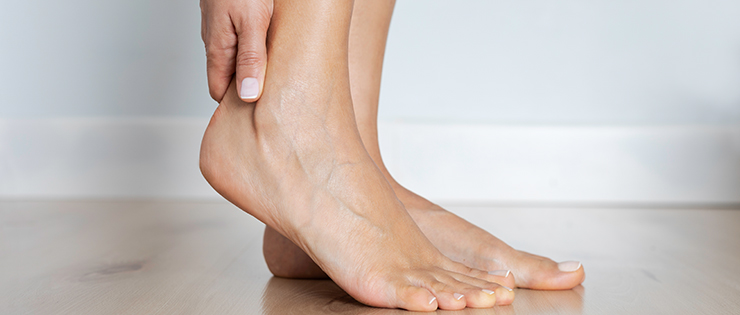
It’s very likely that the majority of us don’t really give much thought to the wellbeing of our feet on a daily basis. Our feet are incredibly important. We need them for just about everything; to stand, walk, run, drive, dance; yet we shove them into stiletto heels, strappy sandals and thongs without even comprehending how that can impact on not only the feet themselves but the rest of the body. Let’s look at a few examples:
High Heels
The perfect pair of shiny 4 inch heels can totally complete an outfit (so they say). As you slide into your stilettos your body will make certain adjustments; the lower body will lean forward to maintain a centre of balance forcing the upper body backwards as a counterweight, completely altering your spinal alignment. Then you start to walk, but of course your gait is completely different; being positioned up on your toes means you can’t utilise the calf to propel you off the ground, instead relying on your hip flexors to work harder. Tight, overactive hip flexors can lead to problems around the hips, pelvis and lower back. Then there is the increase in pressure on the knee joints, stiff ankles, achilles issues and potential development of foot and toe deformities that can all manifest from wearing high heels on a regular basis. I think you should probably be asking yourself, is foot fashion really worth it? If you absolutely must wear heels, opt for low to mid size wedges, the angle of the foot isn’t as quite as hard and they tend to be more supportive.
Thongs
A very widely worn Aussie footwear choice, which unfortunately have no real upside except their convenience. When you wear thongs all the intrinsic muscles of your foot have to contract to grip your feet in the thongs. There is also increased demand on the calf and other muscles in the lower leg work harder. Over time these muscles fatigue and get tight which can result in overuse injuries such as plantar fasciitis or achilles tendinopathy. Full disclosure I do own thongs, and I do wear them BUT I am quite selective on when and for how long. A quick trip to the beach, sure flip flops it is, but if I’m heading out for some retail therapy or anything that involves being on my feet for extended periods I’m more likely to be reaching for my converse.
Ballet flats
Realistically they probably offer as much support for your foot as a flip flop and wearing these around all day could contribute too many of the foot and ankle problems discussed above.
The wrong shoes for the type of exercise you are doing
This is a tough one; the sneaker world is unbelievable in terms of the choice. It’s completely overwhelming. Some of the most attractive looking shoes are unfortunately not the best when it comes to support levels especially if you are heading out for a 10km run or doing some high intensity training but they may be perfect for lower impact styles of training. As a runner I always have a pair of good quality running shoes such as Asics or Mizunos, which I replace every 6-9 months. I then have an alternative pair of cross training shoes that I wear to the gym for my weights and circuit sessions. This is a tricky topic so if in doubt speak to your physiotherapist or podiatrist about which footwear would be best for your training style.
The footwear you choose to wear on a daily basis is actually a much more important decision that you realise. Pick the wrong ones and you may inadvertently be predisposing yourself to developing poor movement patterns and certain injuries.